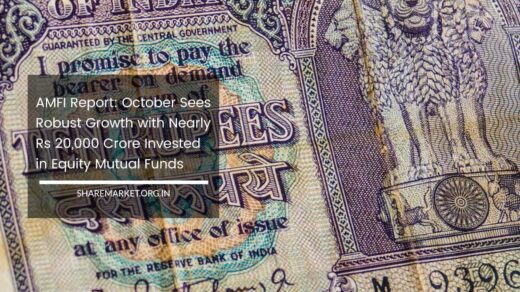What is MTF in Share Market

What is MTF in Share Market
MTF in Share Market: Leverage Your Investments
Margin trading Facility (MTF) is a popular strategy in the financial markets that allows investors to leverage their positions by borrowing funds from a broker.
By utilizing borrowed funds, investors can increase their purchasing power and potentially amplify their returns.
However, it’s important to note that margin trading also carries increased risk, as it can amplify losses if the market moves against the investor’s position.
When engaging in margin trading, brokers typically require investors to meet certain margin requirements. These requirements can vary depending on the broker, the specific securities being traded, and regulatory guidelines.
Margin requirements may involve depositing a certain percentage of the total value of the securities being traded or providing collateral in the form of other securities or cash.
It’s crucial for investors to carefully review and understand the margin requirements set by their brokers before participating in margin trading.
Interest rates associated with margin trading also vary depending on several factors, including the broker and the type of securities being traded. Brokers set their own interest rates, which can range from relatively low rates to higher rates, such as 15-18% in some cases.
The interest is payable by the investor in exchange for borrowing funds from the broker, and it reduces the overall profitability of the trades.
Therefore, it’s advisable to choose a broker that offers competitive interest rates and flexible terms to minimize costs and potentially increase profits.
When considering margin trading, it’s important to thoroughly understand the risks involved and carefully assess your financial situation.
Margin trading can offer potential benefits in terms of increased buying power, but it should be approached with caution and an understanding of the potential risks and costs involved.
Choosing a reliable and cost-effective trading platform like m.Stock can be a valuable step towards optimizing your margin trading strategy.
Benefits of Margin Trading (MT)
Margin trading offers several benefits for investors and medium-term traders who have activated the margin trading facility on their accounts. Here are some notable advantages:
1. Increased Liquidity
Margin trading is advantageous for investors who seek short-term price movements but lack sufficient cash balances. By utilizing margin trading, they can bridge the liquidity gap and access funds to participate in the market.
2. Utilization of Idle Shares
If you have idle shares sitting in your demat account, margin trading provides an opportunity to leverage these stocks as collateral margins.
This enables you to take Margin Trading Facility (MTF) positions in the equity market and utilize the value of your existing securities.
3. Improved Return on Capital
Margin trading can enhance the percentage return on the capital deployed, thereby improving your Return on Equity (ROE).
Since you only pay a fraction (around 25%) of the total cost when trading on margin, a small price movement can result in a higher ROE. For example, a 5% price increase translates to a 20% gain in ROE.
4. Seizing Lucrative Opportunities
Often, investors miss out on lucrative buying opportunities due to a lack of available liquidity. With the margin trading facility, you can capitalize on these opportunities and potentially grow your investment portfolio.
5. Leveraging Appreciating Assets
Despite borrowing funds, margin trading allows you to invest in appreciating assets such as equities.
Over the long run, this strategy can contribute to wealth creation and serve as a positive economic practice, similar to a beneficial Equated Monthly Installment (EMI) structure.
By understanding and utilizing margin trading effectively, investors and traders can potentially leverage their resources, access additional liquidity, and optimize their returns in the financial markets.
Key Features of Margin Trading (MT)
The margin trading facility at the broking house encompasses several key features that clients can avail themselves of. Here are the notable characteristics:
1. Undertaking and Terms
Clients seeking to utilize the margin trading facility are required to provide an undertaking, indicating their acceptance of the Terms and Conditions specific to Margin Trading Facility (MTF).
This facility is offered within the existing trading account and linked demat account, rather than a separate account.
2. Leveraged Positions
The MTF allows investors to create leveraged positions in securities, enabling them to trade with a larger amount than their available cash on hand.
This feature is particularly valuable in the non-derivatives segment where futures leveraging is not feasible.
3. Margin Options
Traders utilizing the MTF facility can provide the margin amount in either cash or equity collateral.
However, the value of equity collateral is considered after applying a normal haircut of 40% to 50% for equities. Additionally, traders have the flexibility to offer margin through a combination of cash and shares as collateral.
4. Carrying Forward Positions
The duration for which positions can be carried forward is not standardized and is at the discretion of the broker. It can be customized based on the broker-client relationship.
Clients who generate higher brokerage or have a long-standing relationship may receive special privileges. Typically, positions are carried forward for 2-3 months in most cases.
5. Eligible Stocks
Brokers are restricted from offering the MTF facility on all stocks listed on the stock exchange. SEBI defines a master list of eligible stocks for MTF, which serves as the outer limit.
However, brokers may impose additional checks and balances and further refine this list to ensure safety and security.
6. Authorized Brokers
Currently, only corporate brokers registered with SEBI are permitted to offer the margin trading facility. Individual brokers and brokerages structured as partnerships are not authorized to provide this facility according to SEBI rules.
Understanding the features of the margin trading facility allows clients to make informed decisions and utilize leverage effectively within their trading accounts.
Importance of Margin Trading (MT)
Understanding the significance of margin trading highlights its importance for traders and investors. Here are the key reasons why the margin trading facility holds significant value:
1. Access to Trading Opportunities
Margin trading provides the privilege of buying stocks even when you have insufficient funds to make the full purchase.
This allows traders and investors to fully leverage short-term trading opportunities without the need for share delivery.
2. Leveraged Trading Alternative
Margin trading serves as a leveraged trading option, particularly valuable in stocks where futures trading is not available.
By paying only a fraction of the transaction value, traders can buy or sell stocks, using either cash or shares as collateral.
3. Seizing Ultra-Short Term Opportunities
Margin trading allows you to capitalize on ultra-short term opportunities in the market that would have otherwise been missed. By utilizing margin trading, you can swiftly take advantage of time-sensitive market movements.
4. Expanded Trading Positions
Margin trading enables you to take positions that exceed your basic affordability.
This is particularly useful for high conviction calls, where you may want to increase your exposure for potential higher returns. It eliminates the regret of missing out on larger profit opportunities.
The significance of margin trading lies in its ability to provide financial leverage, seize short-term opportunities, and expand trading positions beyond your immediate affordability.
It can be a valuable tool for traders and investors looking to maximize their trading potential.

















